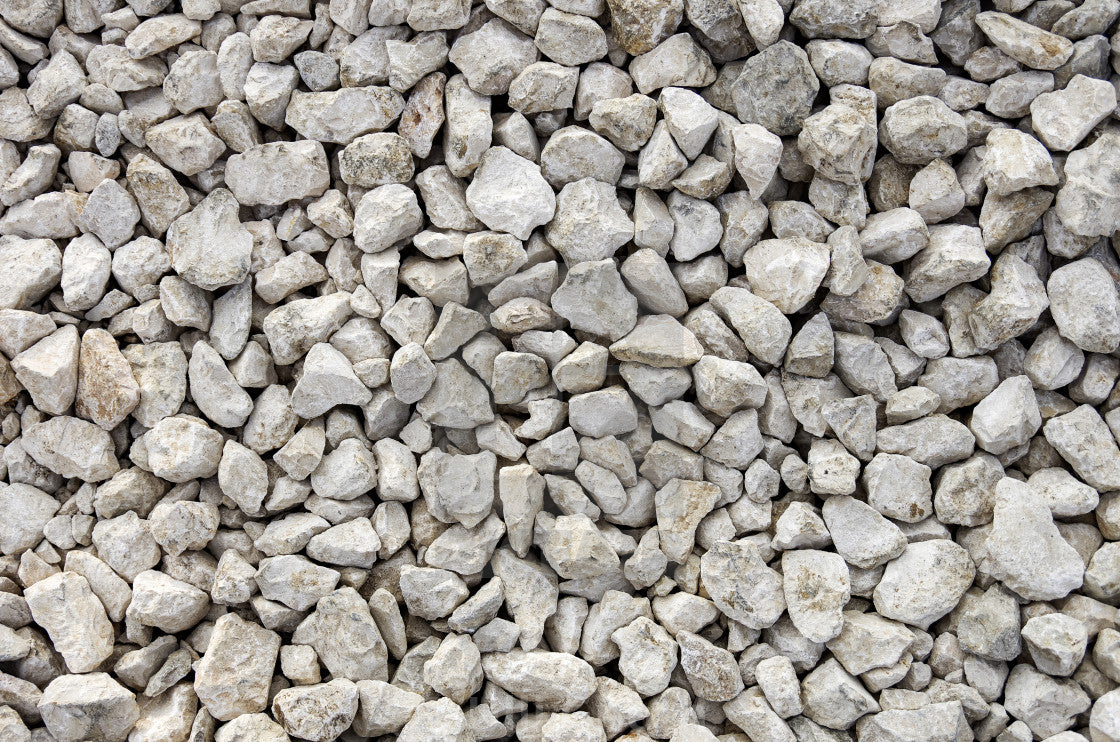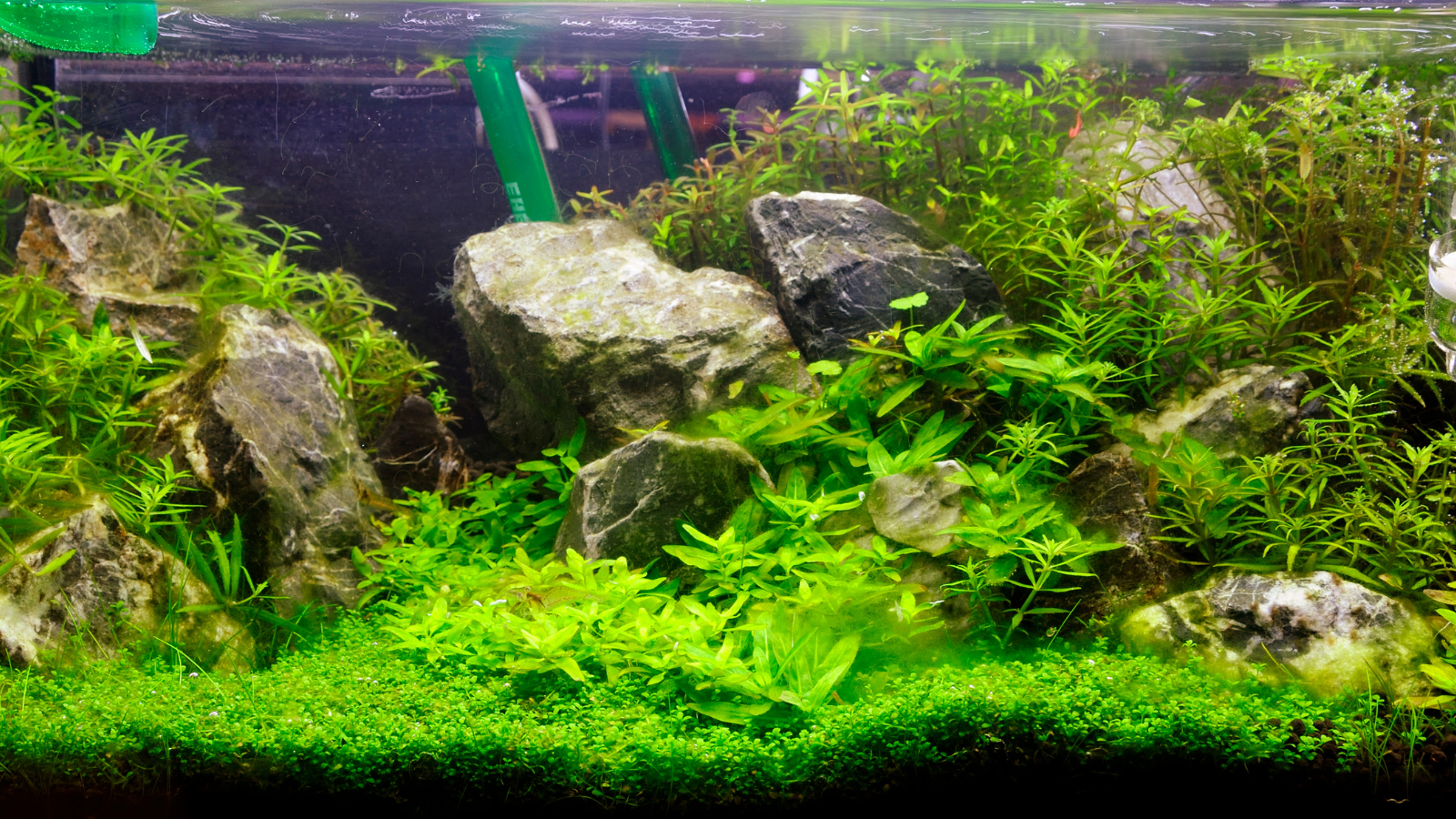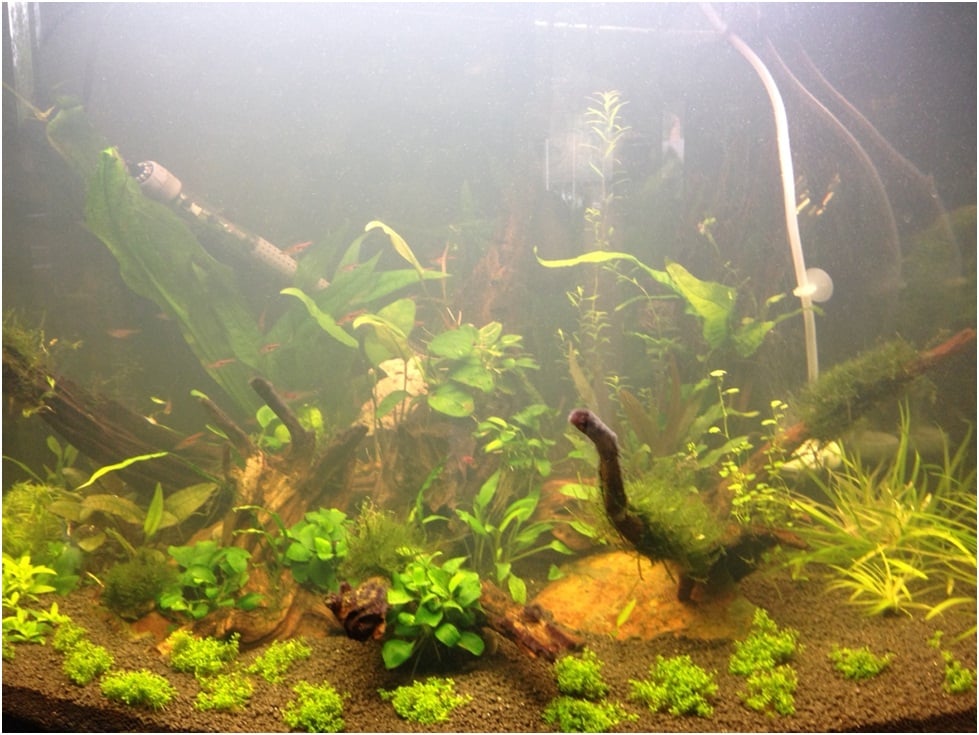
Aquarium substrates
The right substrate for the aquarium is a key issue when it comes to the proper breeding of fish and keeping it properly clean. Find out more about which aquarium substrate to choose in order to grow plants better!
What gravel for the aquarium?
By investing in a good gravel for a tank, you will definitely improve the quality of life for your aquarium fish and plants. Choosing the right substrate for the aquarium determines not only the right conditions, but also the aesthetics of each tank. However, before you decide which gravel to choose for your fish and plants, be sure to familiarize yourself with the types of substrate and the possibilities offered by each of them. The quality of the sand or gravel you choose is very important, it will have an impact on the development of aquarium plants, pH and other water parameters. A reliable product will protect the aquarium against the multiplication of harmful bacteria, as well as ensure the correct and basic balance - and this is what every aquarium enthusiast depends on.
Gravel is by far the most frequently chosen substrate for almost every aquarium. It is used by both advanced breeders and amateur aquarium enthusiasts. It is a good choice because most plants take root very well, a substrate with a grain size of 1 to 3 mm works best. Of course, there is no answer to the question: what granulation will be the best for each aquarium - it all depends on what you want to grow in it, however, for safe granulation for all bottom dwelling fish, oscillations in the range of 3 to 10 mm. Remember that the 3 - 10 mm grain size litter will have smooth edges, so it will be suitable for all your fish.
In general, three types of gravel should be distinguished, which are recommended for most aquariums.:
- quartz gravel
This common substrate is usually grayish or white in shade, thanks to its smooth edges it will be perfect for bottom fish. Light colored substrate will contrast beautifuly with heavily planted aquarium.
-river gravel
You can usually find it in gray, greenish and red natural colors. It looks very natural. It can be adapted visually very easily to the aquatic environment and plants in your aquarium, thanks to its multicolour.
-basalt gravel
This is a black gravel. Dark basalt gravel is perfect for a freshwater aquarium because of its aesthetic appeal. As a rule, basalt is a material with quite sharp edges, which can injure bottom fish. Therefore, when deciding on a basalt substrate, make sure that its edges are rounded. Such a substrate will surely underline the beauty of light colored fish.
What substrate for a general aquarium?
The most common substrates for a general aquarium are gravel substrate or sand. The sand has a patch of "inappropriate substrate for a water tank" stuck to it, but as it turns out - this is not true at all, the point is to choose a good quality sand. Fine-grained sand will be a much better solution than coarse sand, because the coarse sand can cut off the water supply to the roots of plants, without providing them with valuable nutrients necessary for their proper development, then the plants you grow in your water tank can start rot, and with it - the entire plant may die.
Volcanic substrate is also a very good choice when it comes to the complete equipment of a given tank. The volcanic substrate is characterized by very interesting colors, and besides, it is rich in micro and macro elements that can significantly enrich the ecosystem of the entire tank. It is worth knowing that such a volcanic substrate is also a great biological filter for the aquarium, thanks to which the entire tank is much cleaner.
To be honest, choosing the right substrate for your tank is a real challenge because when deciding what substrate will be suitable for your aquarium, it is not only about aesthetics. Correctly selected gravel or sand is a great foundation for live plants that will support their proper development and prevent the growth of harmful bacteria and microorganisms in the planted tank. The choice of a substrate for an aquarium is extremely important, because it mainly determines the optimal development of every living organism.
What substrate for a planted aquarium?
The granulation, which is recommended especially for planted aquariums, should be from 2 to 10 mm, because such values allow proper rooting of aquarium live plants. Fine-grained sand is perceived by many aquarists as an unsuitable aquarium substrate for planted tanks, but it is worth paying attention to fish species that love to bury themselves in the sand - so fine sand can be used in an aquarium with ease.
If you decide to cover the substrate of your planted tank with gravel, then know that if you plan to put aquarium plants in it with quite extensive roots, you should definitely pay attention to the granulation of the aquarium substrate - the larger the pebbles, the better for strongly rooted plants. It is also worth knowing that lining the aquarium with only gravel is not suitable for a planted tank, it is recommended to enrich it with fertilizer balls or other forms of fertilizers - such as sticks or tablets. It is good to properly nourish the substrate at the very beginning but it is best to do it at equal distances, adjusting the arrangement to the needs of specific plants types and species. Such nutrient rich substrate will definitelly let your plants grow healthier.
How to prepare the substrate for the aquarium?
Regardless of its source and type of substrate, it should be carefully cleaned before placing it in the aquarium. For this purpose, sand or gravel should be thoroughly rinsed, and sometimes boiled. The exception are the substrates for planted tanks, which should not be rinsed when setting up an aquarium, unless the manufacturer recommends otherwise. Substrates in general aquariums should be periodically cleaned with a desilter, which removes light dirt from the bottom without moving the gravel. It is best to combine this with a water change. Sometimes, under-gravel filter is also used, which desludge the substrate during the daily functioning of the tank. A properly prepared substrate is one that has the right amount of micro and macro elements, you can compose them yourself, or use ready-made substrates, which are gaining more and more popularity due to the effects that can be achieved in your water tank with ready-made materials.
Activated substrates
Most substrates for planted tanks have one thing in common, that is, they are clay based substrate s.This natural substrate material is an excellent substrate for ANY tank because clay absorbs and holds onto toxins, thus helping to maintain water quality. Clay also has the ability to grab nutrients from the water and to pa nutrients on to the plant roots. This special ability of clay is always appreciated, but is not essential. Moreover, the active substrate for the aquarium contains fertilizers for plants, has optimal granulation for root growth and maintains the desired hardness and low pH of the water. Such a substrate usually lasts for a certain period of time. It has a very good effect on the appearance and growth rate of the live plants. Thanks to the key nutrients such a substrate contains, plants development is incomparably better than when using ordinary gravel without any additives. Many of them contain a number of minerals, reduce KH and GH, stabilize the pH, clarify the water and support biological filtration thanks to its rough structure, ideal for colonization by beneficial bacteria. Such substrates have a number of filtration and sorption properties and are safe for live plants and animals. Be careful with activated substrates while setting up a biotope aquarium because such substrates absorb, inter alia, humic compounds that are essencial, for example, for black waters biotope. Another example is the African lake biotope where pH should be higher than in general aquarium for best African cichlids development. That's why we recommend to use substrates suitable for natural habitat we want to reflect because the substrate has a great impact on water parameters.


